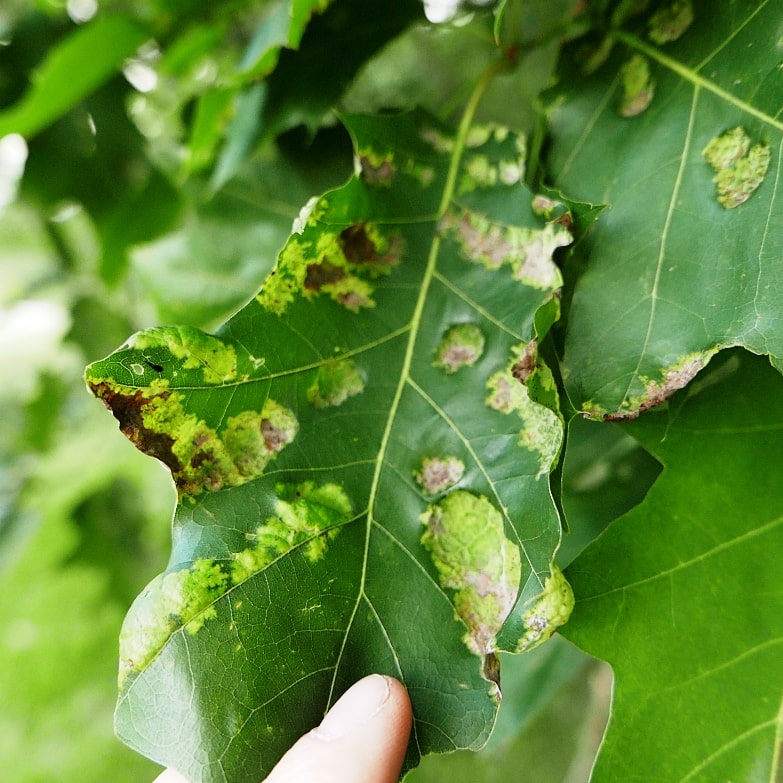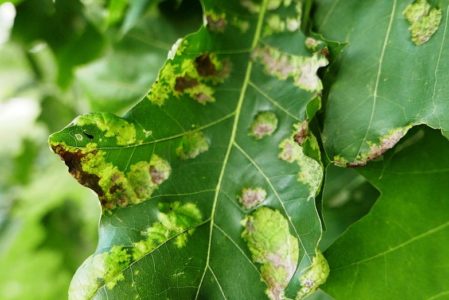 Oak leaf blister is a disease common to red and white oaks. It is seen more frequently in red oaks, however, and can affect them quite severely. Watching out for signs of blisters on the surface of tree leaves may help you identify and treat this disease quickly. One can then address it with the right landscaping equipment and treatments to prevent it from growing out of control.
Oak leaf blister is a disease common to red and white oaks. It is seen more frequently in red oaks, however, and can affect them quite severely. Watching out for signs of blisters on the surface of tree leaves may help you identify and treat this disease quickly. One can then address it with the right landscaping equipment and treatments to prevent it from growing out of control.
Causes
A fungus causes oak leaf blister. The specific fungus identified for this disease is Taphrina caerulescens. Symptoms of this disease typically show in the spring to early summer after periods of heavy rainfall. Like other fungi, which love moisture, it will further progress in the summer if wet weather persists.
Signs of Oak Leaf Blister
When the fungus attacks a tree, it leads to the development of round, raised, or wrinkled looking blisters on leaves. Blistered patches can vary in color, turning yellow, then white. As the fungus progresses, lesions turn brown to black, and trees may begin to lose their leaves during severe infections. Lesions infect the tree from the bottom up and inside out, spreading upward and outward as the disease progresses.
Long-Term Effects
Serious oak leaf blister infections can be quite unsightly. Do not worry though, you can leave your ProLine shovel safely stowed, as oak leaf blister will not kill or endanger the health of your trees.
Treatment Options
Although oak leaf blister will not kill your trees, rapid treatment can help you prevent a slump in sales due to unattractive foliage. Treatment is simple for young trees, however, timing is crucial. A single chlorothalonil fungicide application in early spring before buds break can successfully prevent this unsightly infection. After this time period, fungicides will be ineffective. For large trees, professional application is recommended.
Tips for Avoiding Oak Leaf Blister
Common sense growing tactics can prevent this disease:
- Develop trees with large healthy crowns.
- Ensure adequate (but not excessive) watering and proper aeration.
- Avoid the thinning of trees during drought or insect infestation.
- Diversify the age classes of your trees.
- Rake up and destroy fallen leaves.
Safeguard the health of your trees and improve the efficiency of your commercial nursery or landscaping business. Learn more about professional tree moving and nursery equipment from ProLine today.

